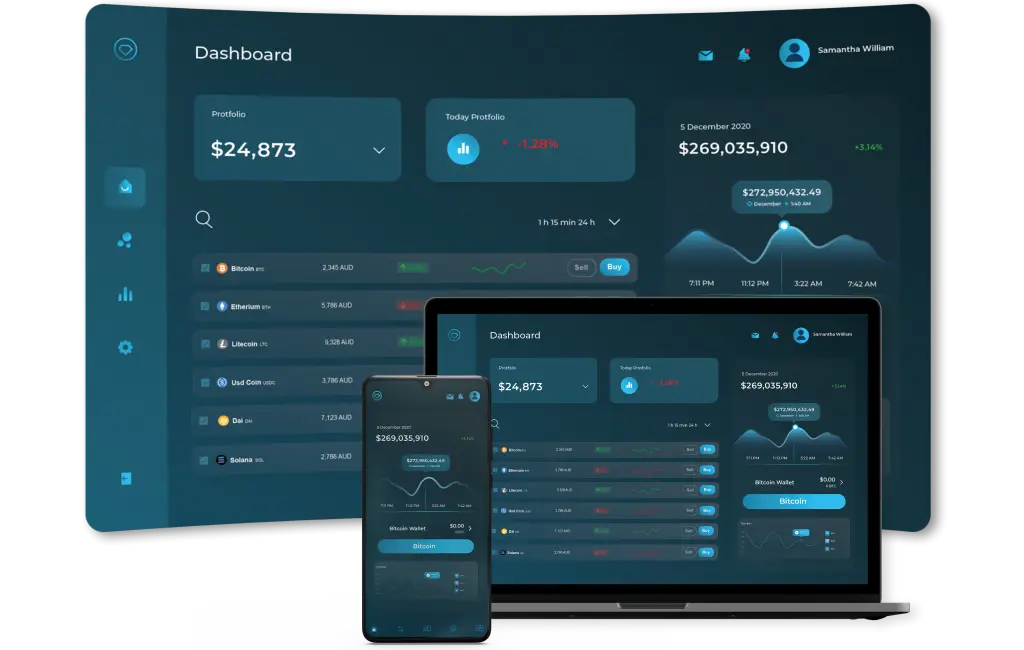Is Starting a Crypto Exchange Still Profitable in 2025?
“Unprofitable?” That’s a common assumption when launching a crypto exchange is discussed. The reasons? A saturated market, evolving regulations, high security risks, and unpredictable crypto volatility. Yet, the real question remains: Is it still profitable to start a crypto exchange, or is the opportunity gone?
Let’s dive in.
Success Still Exists
Despite challenges, many platforms continue to thrive:
Binance, launched in 2017, became the largest exchange globally by trading volume, earning over $1B in its first year.
Coinbase, launched in 2012, went public in 2021 with an $86B valuation.
Uniswap, a leading DEX, pioneered the AMM model and crossed $1T in trading volume.
Profitability remains possible with the right model, strategy, and crypto development company by your side.
Types of Exchanges & Revenue Streams
There are three main types of exchanges:
Centralized Exchanges (CEXs) like Binance offer fast transactions and regulatory compliance.
Decentralized Exchanges (DEXs) like Uniswap enable peer-to-peer trading with greater user control.
Hybrid Exchanges blend the benefits of both CEX and DEX platforms.
Revenue is primarily generated through:
Trading fees
Deposit/withdrawal fees
Token listing charges
Services like staking and DeFi products
For businesses exploring this domain, consulting with an experienced cryptocurrency exchange development company can simplify the complexities of building a secure and compliant platform.
What Influences Profitability?
Key factors include:
User adoption and liquidity: The more users and volume, the higher the earnings.
Security and compliance: Non-negotiable in today’s high-risk environment.
Differentiation: Features like AI trading, regional tokens, or unique rewards attract users.
Marketing and visibility: Great tech without outreach won’t work.
Risks and Investment
Launching an exchange requires significant capital for tech, legal, and security. White-label solutions can reduce initial costs but limit customization. Regulatory changes and competition from major players add to the challenge.
Emerging Opportunities
Trends show growth in:
Niche exchanges (NFTs, regional tokens)
Web3 and DeFi integrations
Crypto adoption in emerging markets (Africa, LATAM, SEA)
AI-driven trading automation
Final Thoughts
So, is it profitable? Yes, but only with a strategic approach. By understanding the landscape, managing risks, and aligning with the right blockchain development company, success is within reach.
Justtry Technologies, a trusted blockchain development company, is here to bring your crypto exchange idea to life with expert-led solutions, security-first design, and end-to-end support.
Call/WhatsApp: https://wa.me/919500139200
Email: sales@justtrytech.com
Visit:https://justtrytech.com/p2p-crypto-exchange-development/
“Unprofitable?” That’s a common assumption when launching a crypto exchange is discussed. The reasons? A saturated market, evolving regulations, high security risks, and unpredictable crypto volatility. Yet, the real question remains: Is it still profitable to start a crypto exchange, or is the opportunity gone?
Let’s dive in.
Success Still Exists
Despite challenges, many platforms continue to thrive:
Binance, launched in 2017, became the largest exchange globally by trading volume, earning over $1B in its first year.
Coinbase, launched in 2012, went public in 2021 with an $86B valuation.
Uniswap, a leading DEX, pioneered the AMM model and crossed $1T in trading volume.
Profitability remains possible with the right model, strategy, and crypto development company by your side.
Types of Exchanges & Revenue Streams
There are three main types of exchanges:
Centralized Exchanges (CEXs) like Binance offer fast transactions and regulatory compliance.
Decentralized Exchanges (DEXs) like Uniswap enable peer-to-peer trading with greater user control.
Hybrid Exchanges blend the benefits of both CEX and DEX platforms.
Revenue is primarily generated through:
Trading fees
Deposit/withdrawal fees
Token listing charges
Services like staking and DeFi products
For businesses exploring this domain, consulting with an experienced cryptocurrency exchange development company can simplify the complexities of building a secure and compliant platform.
What Influences Profitability?
Key factors include:
User adoption and liquidity: The more users and volume, the higher the earnings.
Security and compliance: Non-negotiable in today’s high-risk environment.
Differentiation: Features like AI trading, regional tokens, or unique rewards attract users.
Marketing and visibility: Great tech without outreach won’t work.
Risks and Investment
Launching an exchange requires significant capital for tech, legal, and security. White-label solutions can reduce initial costs but limit customization. Regulatory changes and competition from major players add to the challenge.
Emerging Opportunities
Trends show growth in:
Niche exchanges (NFTs, regional tokens)
Web3 and DeFi integrations
Crypto adoption in emerging markets (Africa, LATAM, SEA)
AI-driven trading automation
Final Thoughts
So, is it profitable? Yes, but only with a strategic approach. By understanding the landscape, managing risks, and aligning with the right blockchain development company, success is within reach.
Justtry Technologies, a trusted blockchain development company, is here to bring your crypto exchange idea to life with expert-led solutions, security-first design, and end-to-end support.
Call/WhatsApp: https://wa.me/919500139200
Email: sales@justtrytech.com
Visit:https://justtrytech.com/p2p-crypto-exchange-development/
Is Starting a Crypto Exchange Still Profitable in 2025?
“Unprofitable?” That’s a common assumption when launching a crypto exchange is discussed. The reasons? A saturated market, evolving regulations, high security risks, and unpredictable crypto volatility. Yet, the real question remains: Is it still profitable to start a crypto exchange, or is the opportunity gone?
Let’s dive in.
Success Still Exists
Despite challenges, many platforms continue to thrive:
Binance, launched in 2017, became the largest exchange globally by trading volume, earning over $1B in its first year.
Coinbase, launched in 2012, went public in 2021 with an $86B valuation.
Uniswap, a leading DEX, pioneered the AMM model and crossed $1T in trading volume.
Profitability remains possible with the right model, strategy, and crypto development company by your side.
Types of Exchanges & Revenue Streams
There are three main types of exchanges:
Centralized Exchanges (CEXs) like Binance offer fast transactions and regulatory compliance.
Decentralized Exchanges (DEXs) like Uniswap enable peer-to-peer trading with greater user control.
Hybrid Exchanges blend the benefits of both CEX and DEX platforms.
Revenue is primarily generated through:
Trading fees
Deposit/withdrawal fees
Token listing charges
Services like staking and DeFi products
For businesses exploring this domain, consulting with an experienced cryptocurrency exchange development company can simplify the complexities of building a secure and compliant platform.
What Influences Profitability?
Key factors include:
User adoption and liquidity: The more users and volume, the higher the earnings.
Security and compliance: Non-negotiable in today’s high-risk environment.
Differentiation: Features like AI trading, regional tokens, or unique rewards attract users.
Marketing and visibility: Great tech without outreach won’t work.
Risks and Investment
Launching an exchange requires significant capital for tech, legal, and security. White-label solutions can reduce initial costs but limit customization. Regulatory changes and competition from major players add to the challenge.
Emerging Opportunities
Trends show growth in:
Niche exchanges (NFTs, regional tokens)
Web3 and DeFi integrations
Crypto adoption in emerging markets (Africa, LATAM, SEA)
AI-driven trading automation
Final Thoughts
So, is it profitable? Yes, but only with a strategic approach. By understanding the landscape, managing risks, and aligning with the right blockchain development company, success is within reach.
Justtry Technologies, a trusted blockchain development company, is here to bring your crypto exchange idea to life with expert-led solutions, security-first design, and end-to-end support.
Call/WhatsApp: https://wa.me/919500139200
Email: sales@justtrytech.com
Visit:https://justtrytech.com/p2p-crypto-exchange-development/
0 Comentários
0 Compartilhamentos
116 Visualizações
0 Anterior














